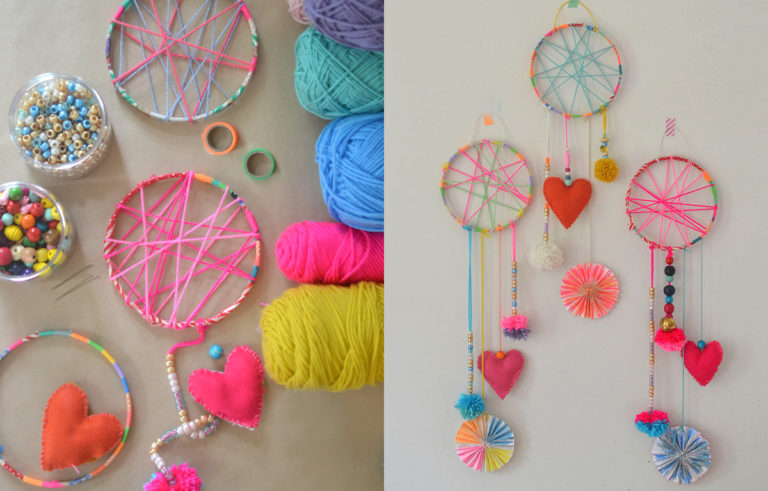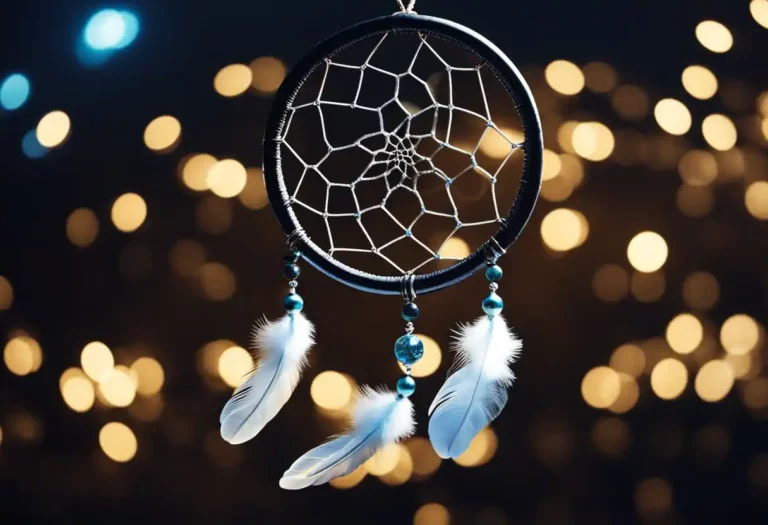- General
- Updated on August 19, 2025
The Meaning and History of Dream Catchers: More Than Just a Beautiful Decoration

Introduction
Dream catchers are more than just charming ornaments hanging by a window or over a bed. These delicate webs, often adorned with feathers and beads, carry deep cultural, spiritual, and symbolic significance. Rooted in Native American traditions, dream catchers have become globally recognized symbols of protection, peace, and positive energy. To truly appreciate them, it’s important to explore the Meaning and History of Dream Catchers, which reveal their role as tools of spiritual guidance and guardians against negative dreams. Understanding their origins and purpose allows us to value them not only for their beauty but also for the centuries-old wisdom they embody.
The Origins of Dream Catchers

Dream catchers trace their roots to the Ojibwe (Chippewa) people of North America. Traditionally, these handmade objects were woven from willow hoops and natural fibers, forming a web-like design. According to legend, the dream catcher was created to filter dreams—allowing good dreams to pass through and gently slide down the feathers to the sleeping person, while bad dreams were caught in the web and dissolved with the first light of day.
Over time, neighboring Native American tribes and later non-Indigenous communities adopted and adapted the dream catcher’s design and symbolism. Today, they are cherished worldwide, though their cultural origins remain deeply respected in Native traditions.
Symbolism in the Design
A dream catcher is not just a decorative object—it’s a deeply symbolic artifact rooted in Native American culture. Every component is crafted with intention, carrying a unique meaning that contributes to its protective role.
1. The Hoop – The Circle of Life
- The hoop forms the foundation of the dream catcher.
- It symbolizes the circle of life, a reminder that all beings, events, and experiences are interconnected.
- This circular shape also represents the sun and moon, guiding us through the cycles of life and nature.
2. The Web – The Filter of Dreams
- The web is perhaps the most recognizable part of a dream catcher.
- Traditionally, it is believed to catch negative dreams and harmful thoughts, preventing them from disturbing the sleeper.
- Positive dreams and good energy slip through the gaps and travel down to the person below.
- The intricate weaving of the web mirrors the spider’s skill, symbolizing patience, persistence, and purpose.
3. Feathers – Breath and Guidance
- Feathers hang delicately from the dream catcher, and their meaning is both practical and symbolic.
- They represent breath and air, essential elements for sustaining life.
- In Native traditions, feathers also serve as spiritual guides, gently directing good dreams toward the sleeper.
- Different bird feathers can carry unique meanings—owl feathers for wisdom, eagle feathers for courage.
4. Beads – Sacred Charms or the Spider Spirit
- Beads may be woven into the web or placed along the hanging strings.
- In some interpretations, a single bead represents the spider spirit, the original creator of the web and protector of dreams.
- Multiple beads can symbolize captured good dreams, transformed into sacred charms that bring protection and positive energy.
- They also add beauty and personal significance, often chosen for their color or spiritual properties.
A Unified Symbol of Protection and Connection
When combined, the hoop, web, feathers, and beads create more than an art piece—they form a powerful talisman. This blend of symbolism and craftsmanship turns a dream catcher into a meaningful object that connects the physical and spiritual worlds.
Whether hung above a bed, by a window, or carried as a charm, it serves as a reminder of harmony, protection, and the belief that dreams—both day and night—shape our journey.
The Spiritual Purpose of Dream Catchers
Originally, dream catchers were crafted for children to protect them from nightmares. Over time, their purpose expanded to include promoting positive energy, mental clarity, and spiritual balance. Many people today believe that dream catchers help cleanse a space, reduce anxiety, and inspire peaceful sleep.
In Native tradition, they are not merely decoration but sacred objects created with intention and respect. The act of making a dream catcher was often a ritual in itself, involving prayer, blessings, and symbolism woven into every strand.
Modern-Day Dream Catchers
In today’s world, dream catchers have moved far beyond their original purpose as protective charms in Indigenous communities. They’ve become popular symbols of beauty, positivity, and spirituality, appearing in homes, jewelry, clothing designs, and even tattoos. Their aesthetic appeal, combined with their rich symbolism, has made them a favorite among people seeking decorative items with deeper meaning.
However, while their modern popularity is undeniable, it’s equally important to understand and respect the cultural roots of dream catchers. These items are not merely fashion accessories—they are sacred objects with centuries of tradition and spiritual significance.
1. Variety and Modern Interpretations
- Design diversity: Dream catchers today come in many sizes, shapes, and materials. While traditional ones were made using natural elements like willow hoops, sinew, and feathers, modern versions might feature metal hoops, synthetic threads, colorful beads, and crystals.
- Color symbolism: Contemporary designs often incorporate colors chosen for personal meaning or interior décor, although in traditional settings, each color could carry spiritual or cultural significance.
- Fusion with art: Many artisans blend Indigenous craftsmanship with modern artistic expression, creating dream catchers that are both culturally rooted and visually innovative.
2. Importance of Cultural Respect
- Acknowledging origins: Dream catchers have their roots in Native American traditions, particularly among the Ojibwe (Chippewa) people, later shared and adapted by other Indigenous tribes. Recognizing this history prevents cultural appropriation and fosters respect for the traditions that gave them meaning.
- Avoiding mass-produced imitations: Many commercial dream catchers are made overseas with no connection to Indigenous communities. While they may look attractive, they often lack the spiritual blessing, authenticity, and traditional craftsmanship that define a true dream catcher.
- Ethical purchasing: Choosing to buy from Indigenous artisans ensures your purchase supports the very communities that originated this tradition. It also helps preserve traditional knowledge and skills passed down through generations.
3. The Value of Handmade Pieces
- Authenticity and blessing: Handmade dream catchers created by Native artisans often carry the original spiritual intent—to protect the sleeper from bad dreams while allowing good dreams to pass.
- Craftsmanship: Each piece is unique, reflecting the maker’s skill, cultural background, and personal touch.
- Cultural preservation: Supporting Indigenous creators helps sustain their heritage, providing them with a livelihood while keeping their traditions alive.
In short, while dream catchers have evolved into decorative and symbolic items loved worldwide, their true beauty lies in honoring their origins and supporting the people who keep this sacred art alive.
How to Use and Care for a Dream Catcher
If you choose to keep a dream catcher, placing it above your bed or near a window is thought to help filter dreams and protect your energy. Like any symbolic object, the care you give it reflects the respect you have for its meaning.
- Keep it clean and dust-free.
- Avoid letting it become damaged or tangled.
- If it feels like it has absorbed too much negative energy, some traditions suggest burning sage near it for cleansing.
Also Read: How Your Desk Setup Reflects Your Productivity Habits
Conclusion
Dream catchers are more than pretty ornaments—they are symbols of unity, protection, and the enduring wisdom of Native cultures. By learning their history, respecting their origins, and appreciating their purpose, we can connect to a piece of spiritual heritage that continues to inspire and protect across generations.
Join the discussion
Related Articles
No results available
ResetTrending Articles


- General
- Updated on December 16, 2025


- General
- Updated on December 15, 2025


- General
- Updated on December 11, 2025


- General
- Updated on December 11, 2025


- General
- Updated on December 11, 2025


- General
- Updated on December 2, 2025


- General
- Updated on December 5, 2025


- General
- Updated on November 27, 2025


- Health
- Updated on November 24, 2025


- General
- Updated on November 24, 2025
No results available
Reset


